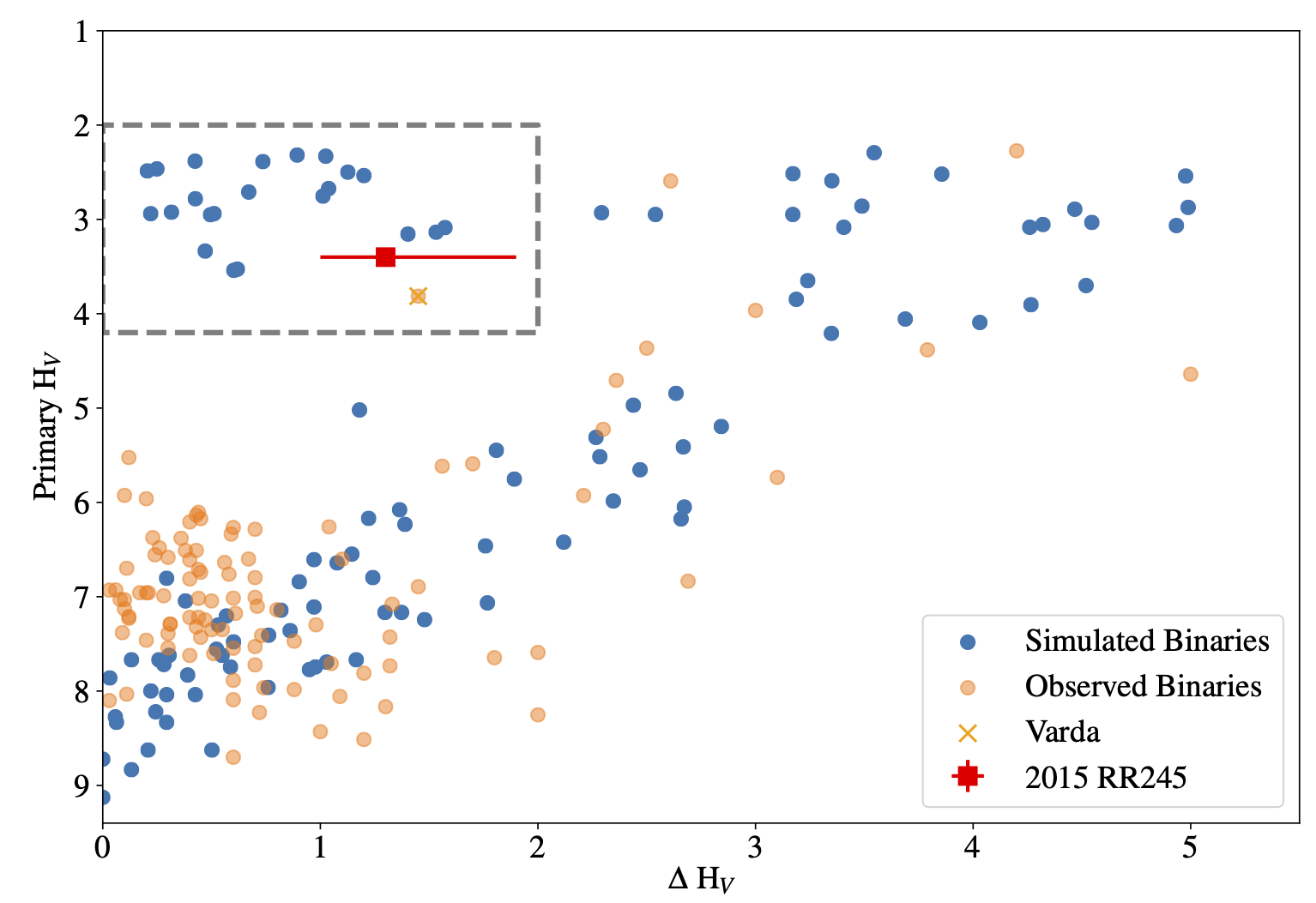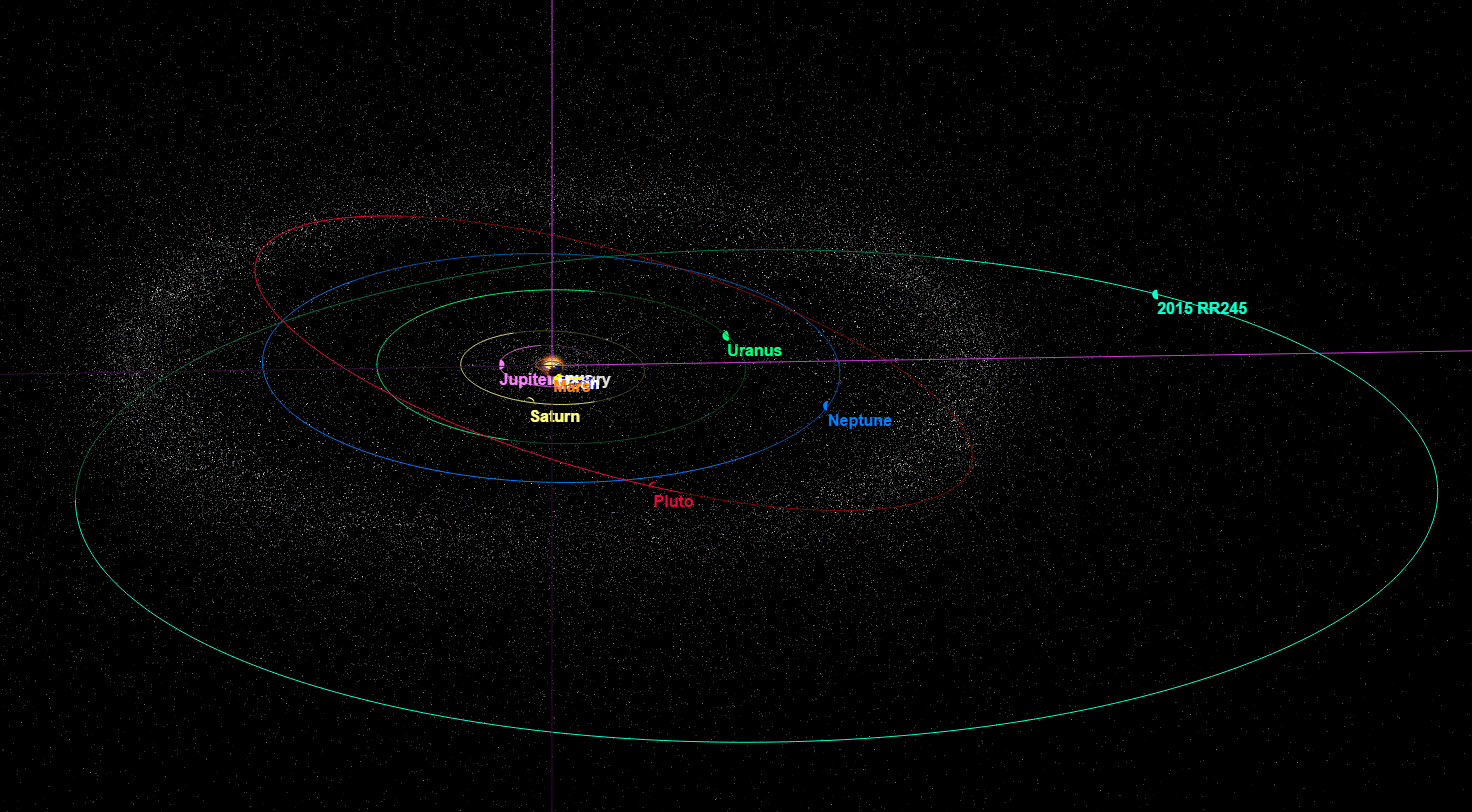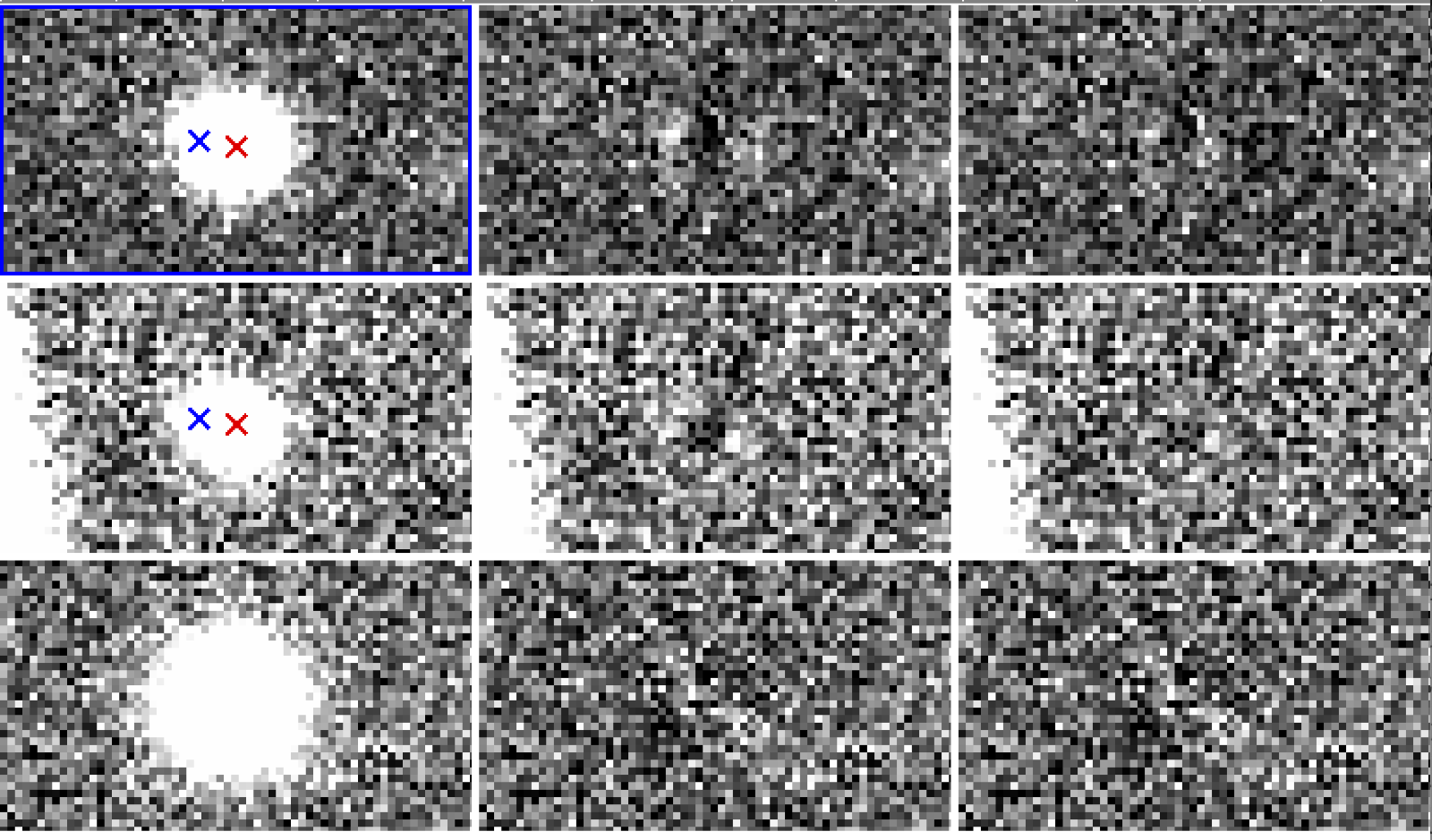This post is about our upcoming Hubble Space Telescope observations of the Kuiper Belt Object, 2015 RR245. I nicknamed this exciting target, Leonardo. I think it's a binary, and not just a single. Here I'll tell you about why that's important, and what observations we should get.
One of the strange properties of Kuiper Belt Objects are the large number in binary, or even trinary (and higher still) systems. At last count, we know of 109 binary systems. Compare that to the asteroid belt where there are only a small handful of binary systems. Trying to understand where this high binarity comes from has been a hot topic of research for a long time. The favoured mechanism is collapse of a gravitationally bound of pebbles. The cloud itself is made from those pebbles interacting with gaseous material. These mutual interactions can force the pebbles together increasing density until gravity can take over. Here's an animation from my colleague, Dr. David Nesvorny, of the streaming instability, squeezing these pebbles together.
Once a clump forms in a simulation like the above, we can take that clump and simulate the final stages of planetesimal formation, where all the pebbles are drawn together under gravity, and stick together through collisions. Here's an example of that sort of simulation, done by my former PhD student, Dr. James Robinson.
The beauty of this idea - planetesimal formation through collapse of a pebble cloud - is that it preferentially forms systems of binary (like in the animation), or higher multiplicity, than it does single bodies. Some results of our formation simulations can be seen below. These beautiful results were produced as part of Jamie's thesis work, with results discussed in more detail in his first accepted paper.

This formation route naturally results in binaries with properties similar to what we observe in the Kuiper Belt, which lends support to that this idea might actually be correct. But not all is well. As you can probably tell, in the top left, there are more simulated bodies with real ones. To understand that plot, magnitude is a proxy for size, with bigger objects higher in the plot. On the left are objects with very similar size primary and secondary bodies, while moving right, the secondary gets smaller compared to the primary. So simulations of binary formation predict an abundance of large, equal sized bodies that we haven't detected many of in the Kuiper Belt. In fact, we know of only one: Varda and Ilmare. It may be that we have just missed them so far, which is quite possible given how observations are planned. If this lack of big, equal-sized binaries is real however, it probably means something is wrong with the formation model itself.
This brings us to the Kuiper Belt Object, 2015 RR245. You can see RR245's orbit below.

RR245 was discovered by the Outer Solar System Origins Survey. In many ways, Leonardo is a typical large KBO. It's large enough to be considered a dwarf planet candidate, and it has a relatively neutral coloured surface, consistent with many other Kuiper Belt Objects. All in all, it is almost boring.
It only gets exciting when you really dig into the data for this object. In some of the ground based images acquired as part of OSSOS, Leonardo looks to be two barely resolved sources. These happen to be when the atmosphere was at its stillest, and therefore, the images their sharpest.

When a source is clearly just a single body, we can subtract its image cleanly, leaving just noise. That's what the bottom row in the above graphic shows. In the case of RR245, a single source leaves the bright-dark-bright "butterfly" pattern which is indicative of two underlying sources. Removing two model sources completely accounts for the butterfly. The fact that the butterfly pattern shows up twice is why we think Leonardo is a binary, and not just a single body.
The fun part of about RR245 is that from the couple high resolution OSSOS images, this body sits in a very special place - it would be one of the high mass, equal-sized systems, just like Varda. Confirmation of the binarity of RR245 would imply that there is a population of similar binary systems that we just haven't seen yet, and suggest that it the discrepancy between observations and our formation theory isn't a problem with the theory, but rather, with the observations.
Fortunately me and my group were awarded a small, 2 orbit program on the Hubble Space Telescope. We're going to get high resolution observations of Leonardo at a couple different times, in hopes to show that indeed, it's a binary. HST is a wonderful tool for this sort of work. The vast majority of binary Kuiper Belt Objects have been discovered with HST observations. It's the perfect tool for the job.
Observations are scheduled for the first and second weeks of November. So stay tuned! Very excited.